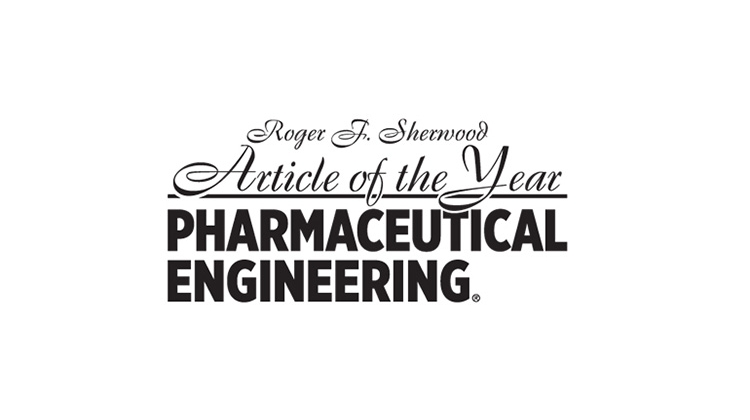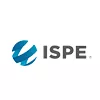2023 Roger F. Sherwood Article of the Year Award Finalists Announced

Pharmaceutical Engineering® (PE) is delighted to announce the finalists for the 2023 Roger F. Sherwood Article of the Year Award. The articles were selected by judges from 39 feature and technical articles published in PE during calendar year 2023 (Volume 43).
The winner of the 2023 award will be announced and recognized at the upcoming 2024 ISPE Annual Meeting & Expo, taking place 13 – 16 October in Orlando, Florida, USA.
About the Award
ISPE’s Roger F. Sherwood Article of the Year award was established in 1993. The award showcases the best content in Pharmaceutical Engineering, increases industry recognition, highlights ISPE’s reputation as a global knowledge leader, and bolsters magazine content quality. Although various judges have taken part in assessing articles over the years, one constant remains: recognition of quality and excellence in content through identifying finalists and a single winning article for each publication year.
Pharmaceutical Engineering is pleased to acknowledge the articles and authors who contributed to the 2023 magazine, the 43rd year of publication for Pharmaceutical Engineering. The contributions from 2023 are of great value to ISPE and to the industry.

2023 Judging
A subcommittee of the Pharmaceutical Engineering Committee (PEC) served as judges for the 2023 award competition, reviewing articles and providing assessments on the following criteria: usefulness to ISPE readers; how the articles improve the knowledge of key topics; and clarity/ease of reading.
2023 Award Finalists
“A Proposal for A Comprehensive Quality Overall Summary”
(May/June)
by Roger Nosal, Connie Langer, Beth Kendsersky, Jennifer L. Brown, Megan E. McMahon, and Timothy J.N. Watson, PhDWhen working with the common technical dossier (CTD), the structure of Module 2 “follows the scope and outline of the Body of Data in Module 3,” which can reduce review efficiency. This structure does not allow explanation of justification for the control strategy, particularly when a quality by design (QbD) approach is employed. The authors propose using Module 2.3 to effectively convey the control strategy and clearly identify the established conditions (ECs) or regulatory binding elements that “are considered necessary to assure product quality and therefore would require a regulatory submission if changed post approval.”
“Agile Data-Driven Life Cycle Management for Continuous Manufacturing”
(July/August)
by Rui C. Silva, PhD, Rui Almeida, Pedro Ferreira, José Cardoso Menezes, PhD, and Angela MartinhoPharmaceutical continuous manufacturing (CM) is recognized as a key process intensification technology, with investment expected to rise in the coming years and the focus shifting toward biologics. This article provides a review on the current state of CM implementation, offers insights into life cycle management and regulatory aspects, and explains how a data and knowledge-centric approach to risk management can help CM achieve its full potential.
“An Evaluation of Postapproval CMC Change Timelines”
(September/October)
by Rob Harris, PhD, Meike Vanhooren, Kara Follmann, PhD, Beth Kendsersky, Timothy J.N. Watson, PhD, Melinda Imperati, S. Connor Dennis, PhD, and Roger NosalAs the demand for accelerated access to medicines expands globally, the pharmaceutical industry is increasingly submitting regulatory applications in multiple countries simultaneously. As a result, Boards of Health (BoHs) are challenged with approving these applications in an accelerated timeframe and accommodating the submission of post-approval chemistry, manufacturing, and controls (CMC) changes that pharmaceutical manufacturers submit after implementing improvements or optimizations.
“New EU AI Regulation and GAMP® 5”
(September/October)
by Anders VidstrupThis article describes how ISPE GAMP® 5: A Risk-Based Approach to Compliant GxP Computerized Systems (Second Edition) and related GAMP Good Practice Guides can be effectively applied to help meet the requirements of the proposed European Union (EU) artificial intelligence (AI) regulation for qualifying GxP-regulated systems employing AI and machine learning (ML).
“Comparability Considerations for Cellular and Gene Therapy Products”
(November/December)
by Kathleen Francissen, PhD, Andrew Chang, PhD, Katherine A. Donigan, PhD, Emily C. Hernández, PhD, and Sam GunterCell and gene therapy (CGT) products comprise a rapidly growing field of innovative medicines that hold the promise to treat and, in some cases, cure diseases that are otherwise untreatable. In this article, the authors provide points to consider when evaluating the comparability of CGT when changes are made in their manufacturing processes.
“Delivering Curative Therapies – Autologous vs Allogeneic Supply Chains”
(November/December)
By Pinar Cicalese, PhD and Niranjan S. Kulkarni, PhDAdvanced therapy medicinal products (ATMPs) are one of the most promising developments in the pharmaceutical and biotech industries in recent decades. Although there is a great promise to treat and even cure many diseases with these products, there are also unique challenges, especially with their supply chains.
“Design Considerations for Large-Scale Stem Cell Manufacturing”
(November/December)
by Daniel L. Swanson, BSChE, MBA, PE and Christian Estes, PEThere is much that large-scale commercial stem cell therapy processes can adopt from the existing bioprocessing industry. This article addresses some of the unique challenges posed by large-scale stem cell and stem cell-derived product manufacturing processes, and what should be considered while designing a manufacturing facility.
“Environmental Sustainability in Biopharmaceutical Facility Design”
(Online Exclusive)
by William G. Whitford, Emily Heffernan, PE, and Aoife KellyMany emerging tools and technologies support the environmental sustainability of the pharmaceutical industry. In facility design, solutions are derived through science-based analyses of environmental impacts from the materials, processes, services, and architecture. From greener energy sources to a reduction in the type and amount of emissions, we are seeing improvement in this sector’s environmental footprint.
Seeking Future Finalists
Submissions to Pharmaceutical Engineering are always welcome. For information about how to submit, go to Submit an Article.




